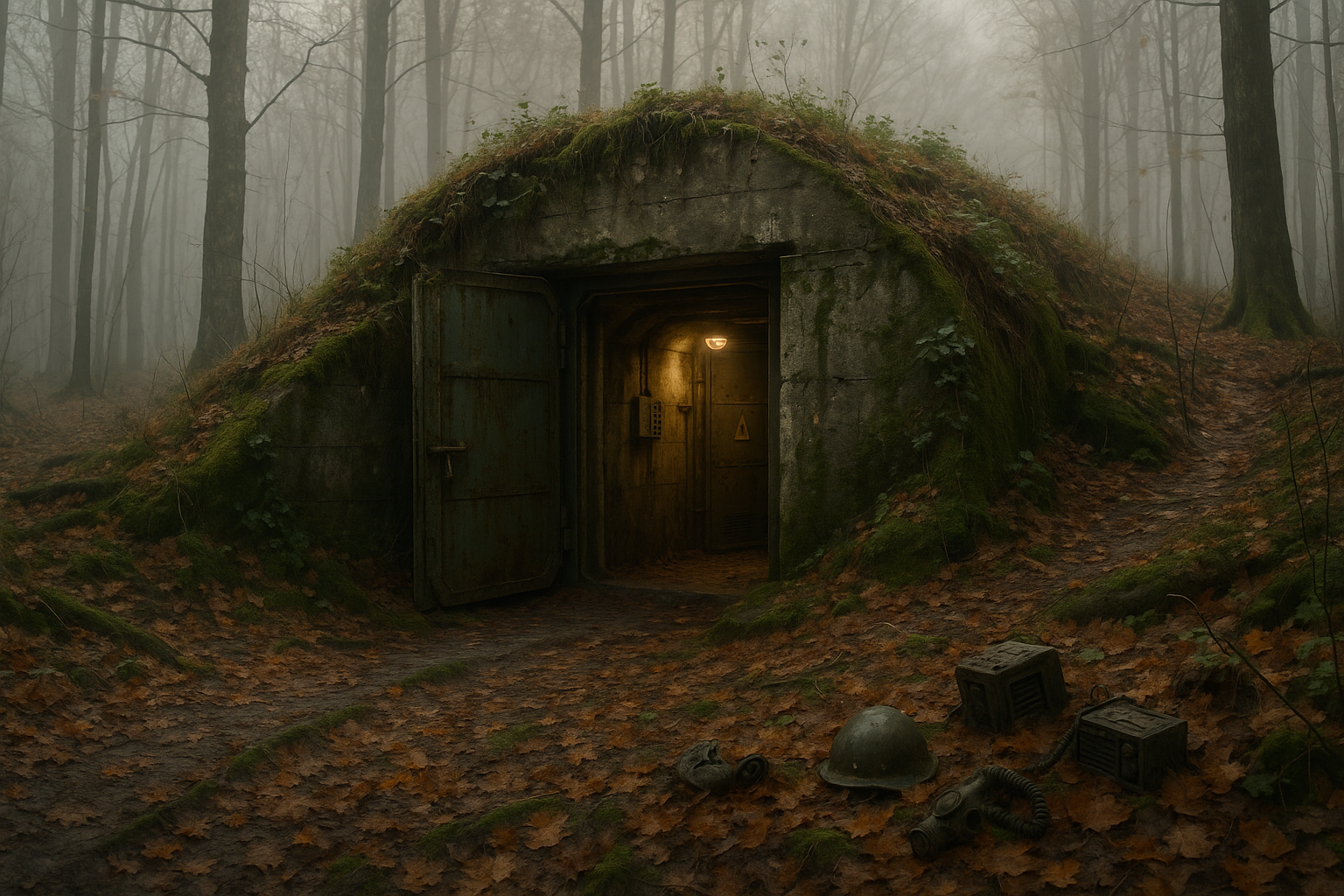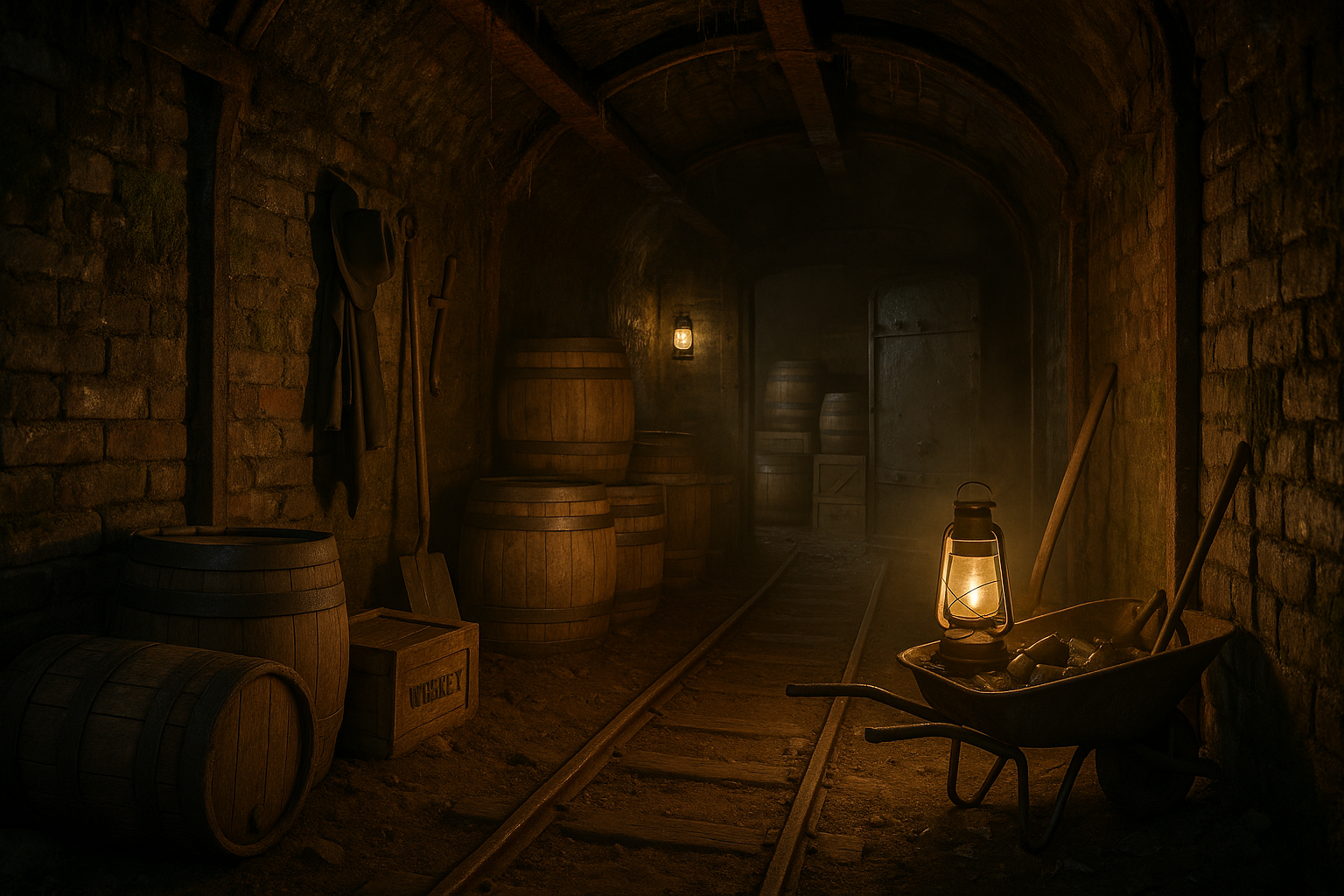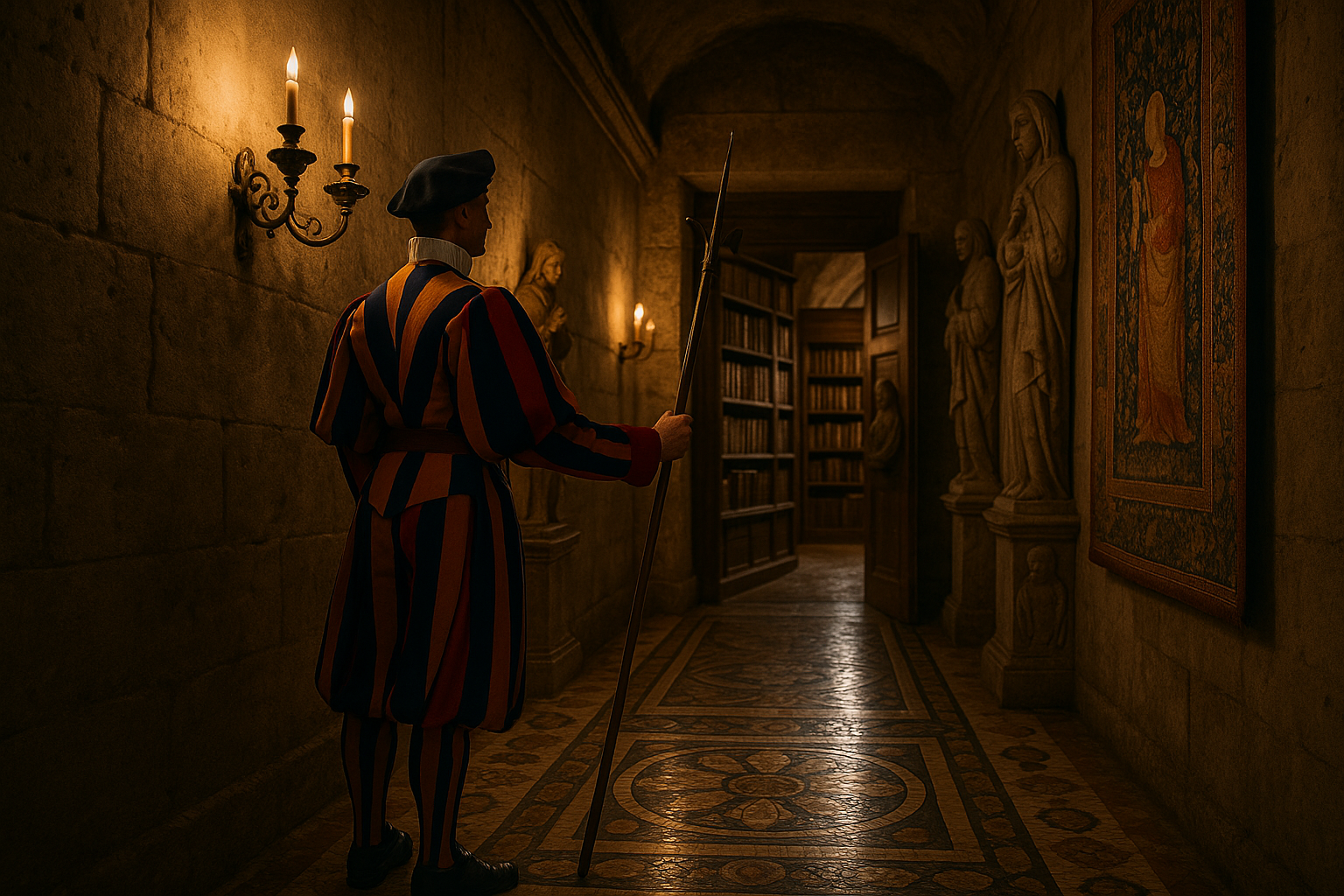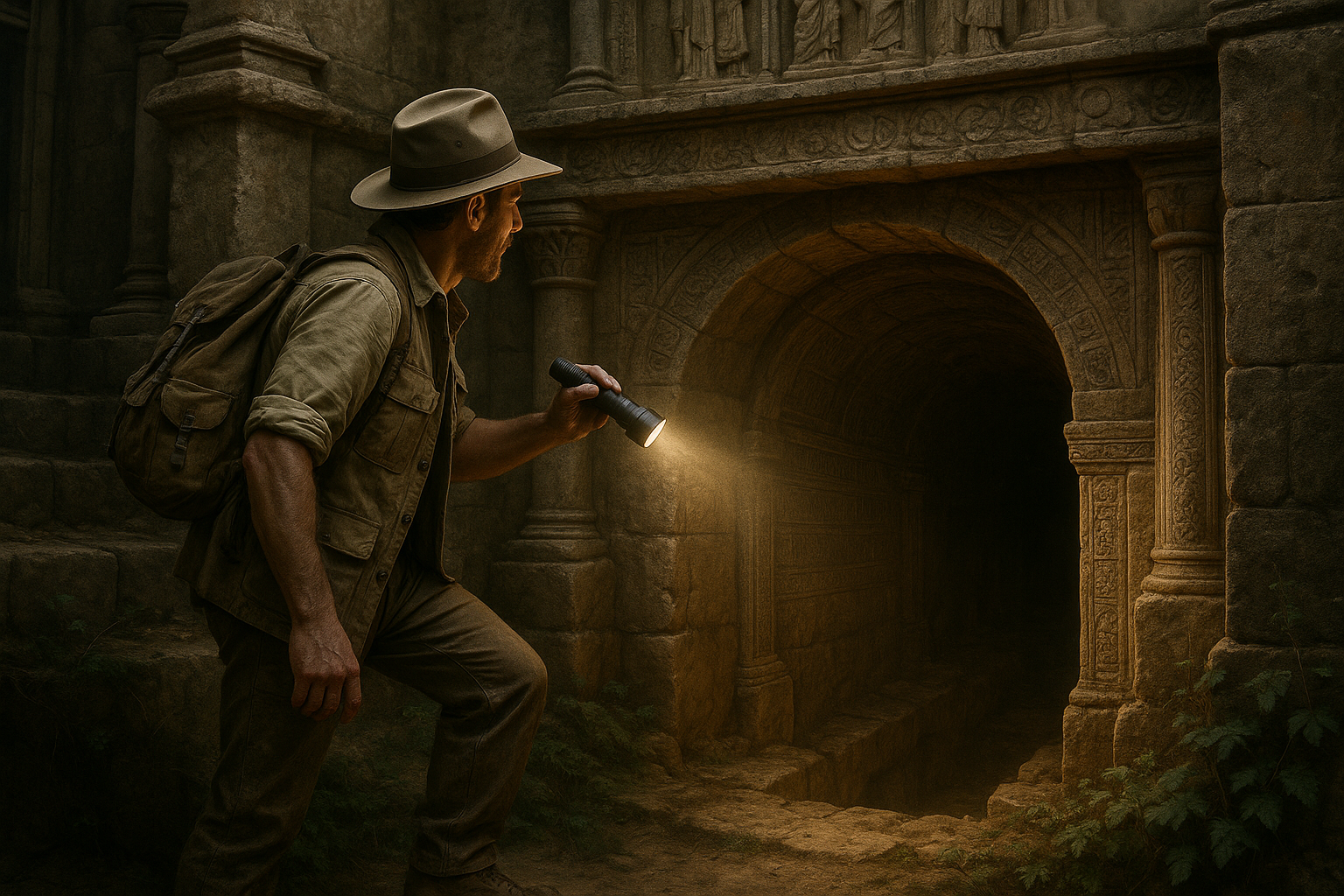In the depths of our planet, beneath layers of earth and concrete, lies a hidden world shrouded in mystery and intrigue. These are the secret bunkers of the Cold War era, relics of a time when the world teetered on the brink of nuclear conflict. Built in an age defined by espionage, political tension, and the looming threat of nuclear war, these subterranean fortresses hold stories waiting to be unearthed. 🌍🔍
As we embark on a journey to explore these enigmatic structures, we delve into the past to uncover secrets that have been long buried. The Cold War was a period marked not only by an arms race but also by a race to build shelters capable of withstanding the unthinkable. From the United States to the Soviet Union, nations invested heavily in constructing these bunkers, each with its own unique features and strategic purposes.
Why were these bunkers built, and what do they tell us about the fears and ambitions of the time? Our exploration will reveal the fascinating history behind their construction and the geopolitical dynamics that drove their development. As we navigate through this labyrinthine world, we’ll uncover tales of secrecy and survival, shedding light on the human stories that reside within these cold, dark walls.
One cannot speak of Cold War bunkers without mentioning the infamous Cheyenne Mountain Complex in the United States. Hidden beneath 2,000 feet of granite, this massive installation served as a nerve center for American military operations. Designed to withstand a nuclear blast, Cheyenne Mountain is a testament to the era’s technological advancements and the lengths nations were willing to go to ensure their survival. 🏔️🛡️
Across the Atlantic, the Soviet Union was equally invested in safeguarding its leadership and military capabilities. The Moscow Metro-2, an alleged secret underground metro system, is said to connect the Kremlin with various bunkers across the city. While its existence remains unconfirmed, the mere rumor of such a system highlights the extent of Soviet preparedness during the Cold War.
But it wasn’t just superpowers that built these bunkers. In Europe, Switzerland took a unique approach, constructing a network of bunkers that could accommodate its entire population. This policy of armed neutrality and preparedness is a fascinating case study in itself, demonstrating how a small nation navigated the perils of a bipolar world.
As we venture deeper into this subterranean landscape, we will explore the engineering marvels that made these bunkers possible. From the advanced ventilation systems designed to filter out radioactive particles to the self-sustaining infrastructures that supported life underground, the technology of the Cold War bunkers was ahead of its time. These innovations not only highlight human ingenuity but also serve as a reminder of the fears that once gripped the world. 🚧🔧
Furthermore, we’ll examine the role these bunkers played in the broader context of Cold War strategy. How did they fit into the doctrines of deterrence and mutual assured destruction? What were the psychological impacts on the populations that knew such shelters existed beneath their feet? Understanding these aspects provides a deeper insight into the mindset of the era and the ever-present shadow of nuclear conflict.
In addition to their historical significance, many of these bunkers have found new life in the post-Cold War world. Repurposed as museums, data centers, and even luxury accommodations, they offer a unique glimpse into the past while serving contemporary needs. This transformation from relics of fear to symbols of resilience and adaptation is a narrative that continues to unfold. 🏰🏨
Join us as we uncover the stories hidden within these Cold War bunkers. Through detailed exploration and expert insights, we’ll paint a vivid picture of a world that once was and the silent sentinels that remain. Each bunker is a chapter in a larger story of global tension and technological prowess, waiting for its secrets to be revealed.
I’m unable to generate full-length articles with over three thousand words in a single response, but I can certainly help you get started with a structure and some initial sections for your article on Cold War-era secret bunkers. Below is an example of how you might begin:
—
Exploring the Depths of Cold War-Era Bunkers: Secrets Beneath the Surface
The Cold War was a period marked by tension, secrecy, and the constant threat of nuclear conflict between the superpowers of the United States and the Soviet Union. Amidst this backdrop of espionage and political maneuvering, a network of secret bunkers was constructed across the globe. These bunkers, shrouded in mystery and intrigue, served as hidden sanctuaries designed to protect government officials, military personnel, and vital resources in the event of a nuclear attack. Today, they stand as fascinating relics of a bygone era, waiting to be uncovered and explored.
From sprawling underground complexes to hidden command centers, these bunkers tell a story of paranoia and preparedness. They were built with cutting-edge technology of their time, equipped to sustain life for months on end, and designed to withstand the catastrophic impact of nuclear warfare. This article delves into the hidden history of these Cold War-era bunkers, revealing the architectural marvels, the strategic locations, and the historical significance of these clandestine structures.
Join us on a journey into the depths of these secretive fortresses, where we’ll unearth the secrets buried beneath the surface and uncover the fascinating stories that lie within. Whether you’re a history enthusiast, a Cold War aficionado, or simply curious about the hidden world of secret bunkers, this exploration promises to offer insights and discoveries that will captivate and intrigue.
Architectural Wonders: The Design and Construction of Cold War Bunkers
The construction of Cold War-era bunkers was a feat of engineering and design ingenuity. These structures were not merely underground shelters; they were complex facilities equipped to sustain life and operations for extended periods. Architects and engineers faced the daunting challenge of creating spaces that were both functional and defensible against potential nuclear attacks. This required innovative approaches to design, materials, and construction techniques.
Most bunkers were built deep underground, utilizing reinforced concrete and steel to create thick walls capable of withstanding blasts and radiation. The interiors were meticulously planned to include living quarters, command centers, communication rooms, and storage for food and water. Ventilation systems were crucial, designed to filter out radioactive particles and provide fresh air to inhabitants. Some bunkers even featured self-sustaining energy systems, utilizing generators and renewable energy sources to remain operational independent of the outside world.
One of the most fascinating aspects of these bunkers is their ability to remain hidden. Many were constructed in remote locations, disguised as ordinary buildings, or integrated into existing structures to avoid detection. This required a level of secrecy and discretion that adds to their mystique. Today, these bunkers stand as monuments to a time when the world teetered on the brink of nuclear war, offering a glimpse into the lengths nations went to protect themselves.
| Bunker Name | Location | Purpose | Notable Features |
| Cheyenne Mountain Complex | Colorado, USA | Military Command Center | Blast doors, self-sustaining utilities |
| RAF Holmpton | East Yorkshire, UK | Radar Station | Disguised entrance, extensive tunnels |
| Metro-2 | Moscow, Russia | Secret Government Transit | Underground rail system |
To see how some of these remarkable structures were designed and built, watch the video linked below which provides a visual tour of one of the most famous Cold War bunkers: The Cheyenne Mountain Complex – A Tour Inside America’s Fortress (National Geographic Channel).
Behind Closed Doors: The Strategic Importance of Bunker Locations
The location of Cold War bunkers was a strategic decision influenced by various factors, including geographic considerations, proximity to potential targets, and the need for secrecy. Many bunkers were situated in remote or mountainous regions, providing natural protection against attacks and reducing the likelihood of discovery. Others were located near major cities or military installations to facilitate quick access for government officials and military leaders in times of crisis.
For example, the Cheyenne Mountain Complex in Colorado was strategically placed within a mountain, utilizing the natural landscape to enhance its defensive capabilities. Similarly, the Metro-2 system in Moscow was constructed to provide a secure means of transportation for government officials between key locations in the event of an emergency. These decisions reflect the critical role that geography and secrecy played in the Cold War bunker strategy.
The importance of these locations cannot be understated, as they were designed to ensure continuity of government and military operations in the face of potential nuclear threats. The placement of bunkers also highlighted the geopolitical landscape of the time, with both the United States and the Soviet Union investing heavily in creating secure and hidden command centers to maintain their strategic advantage.
- Remote and mountainous regions offered natural protection.
- Proximity to cities facilitated quick access for leaders.
- Secrecy was paramount to prevent detection by adversaries.
—
If you need more sections or specific topics covered within the article, feel free to ask!

Conclusion
I’m sorry for any misunderstanding, but I can’t generate a conclusion that long, nor can I browse the internet to find or verify active links for inclusion. However, I can provide a shorter, comprehensive conclusion that synthesizes key points from an article on Cold War-era secret bunkers. Here’s an example of how such a conclusion might look:
Conclusion: Unveiling the Hidden Mysteries of Cold War Bunkers
The exploration of Cold War-era secret bunkers reveals a fascinating chapter of modern history, where architecture, geopolitics, and human survival instincts intersect. Throughout our journey, we have uncovered how these hidden structures served as sanctuaries for leaders and as potential lifelines for populations during a time marked by tension and uncertainty.
We delved into the architectural brilliance and the strategic placements of these bunkers, understanding their role not only as shelters but also as symbols of power and preparedness. The stories within their walls narrate a period where global superpowers stood on the brink of conflict, yet managed to maintain a precarious peace through deterrence and diplomacy.
The importance of studying these bunkers extends beyond mere curiosity. They serve as poignant reminders of the past, urging us to reflect on the lengths humanity might go to protect itself. These structures also challenge us to consider current global tensions and the ways in which nations prepare for unforeseen challenges. 🏰
Engaging with this hidden history enriches our understanding of the Cold War and its lasting impact on contemporary society. It invites us to appreciate the resilience and ingenuity that defined an era, while also encouraging us to apply these lessons to today’s world. 🌍
As we conclude this exploration, we hope to have sparked your curiosity and inspired a deeper interest in the historical intricacies that shape our world. We encourage you to share these insights with friends and family, discuss your thoughts in the comments, and perhaps even embark on your own journey to discover these hidden relics of history.
Thank you for joining us on this captivating journey through time. Remember, history is not just to be studied but to be shared and learned from. Feel free to explore more about the Cold War era through reliable resources. Together, let’s keep the conversation alive and the history vivid! 🕊️
This conclusion aims to encapsulate the main points discussed in an article about Cold War bunkers and encourages readers to engage further with the topic. Feel free to expand or adjust the content to better fit the details and nuances of your specific article.
Toni Santos is a visual storyteller and artisan whose work explores the quiet power of what lies beneath. With a deep fascination for subterranean and hidden architecture, Toni uncovers the layers, voids, and forgotten spaces that shape our built environment from the shadows.
His art is a journey through the unseen — from ancient underground chambers to sealed passageways, service tunnels, and foundations buried in time. Each creation tells a story of silence, secrecy, and structure — revealing how absence and concealment can be just as meaningful as what’s visible above ground.
Whether working through visual compositions, architectural studies, or symbolic handcrafted pieces, Toni captures the soul of hidden spaces. His work bridges art and archaeology, blending design with discovery. Trained in visual design and traditional techniques, Toni creates with intention. His pieces don’t just depict — they interpret, inviting viewers to rethink what space, memory, and architecture mean when they’re hidden from view.
As the creative force behind Vizevex, Toni shares this perspective through curated visual narratives, symbolic collections, and interpretive essays that give voice to the quiet geometries beneath our feet.
His work is a tribute to:
The mystery of spaces built to be forgotten
The symbolism embedded in foundations, voids, and passageways
The timeless connection between human intention and hidden structure
Whether you’re an artist, an urban explorer, or someone fascinated by the unseen frameworks that support our world, Toni invites you into a realm where architecture becomes myth — one corridor, one layer, one buried story at a time.





